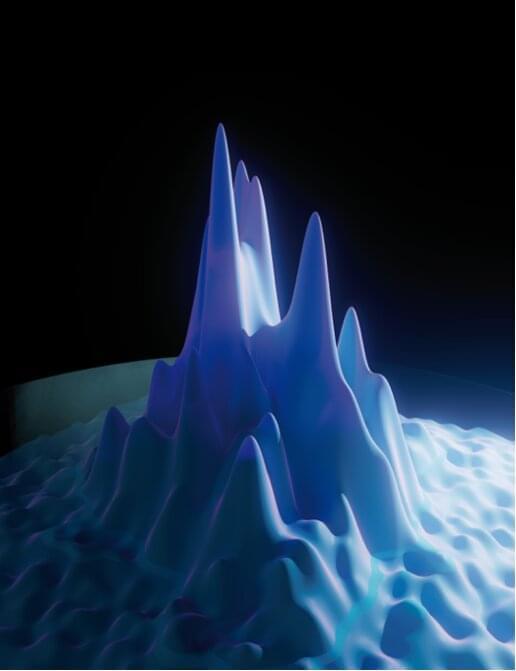Vice President of AI & Quantum Computing, Paul Smith-Goodson dive into the strategic partnership between IoQ and QuantumBasel.



Science and Technology:
Hope that they find a medicine to cure aging and turn us immortal and able to live forever still during “our” lifetime.
Insilico Medicine, a clinical stage generative artificial intelligence (AI)-driven drug discovery company, today announced that it combined two rapidly developing technologies, quantum computing and generative AI, to explore lead candidate discovery in drug development and successfully demonstrated the potential advantages of quantum generative adversarial networks in generative chemistry.
The study, published in the Journal of Chemical Information and Modeling, was led by Insilico’s Taiwan and UAE centers which focus on pioneering and constructing breakthrough methods and engines with rapidly developing technologies—including generative AI and quantum computing —to accelerate drug discovery and development.
The research was supported by University of Toronto Acceleration Consortium director Alán Aspuru-Guzik, Ph.D., and scientists from the Hon Hai (Foxconn) Research Institute.

Over the past decades, physicists and engineers have been trying to develop various technologies that leverage quantum mechanical effects, including quantum microscopes. These are microscopy tools that can be used to study the properties of quantum particles and quantum states in depth.
Researchers at Silicon Quantum Computing (SQC)/UNSW Sydney and the University of Melbourne recently created a new solid-state quantum microscope that could be used to control and examine the wave functions of atomic qubits in silicon. This microscope, introduced in a paper published in Nature Electronics, was created combining two different techniques, known as ion implantation and atomic precision lithography.
“Qubit device operations often rely on shifting and overlapping the qubit wave functions, which relate to the spatial distribution of the electrons at play, so a comprehensive knowledge of the latter provides a unique insight into building quantum circuits efficiently,” Benoit Voisin and Sven Rogge, two researchers who carried out the study, told Phys.org.

Ark Invest, which is led by CEO Cathie Wood, has been pouring money into semiconductor stocks lately and has made another notable purchase. According to portfolio updates published by the firm yesterday, Wood’s company has increased its investment in Quantum-Si (QSI-6.20%) — a small-cap biotech with a specialized, chip-based platform for protein sequencing.
Ark Invest regularly publishes information about stocks that have been bought and sold for its exchange-traded funds (ETFs), and a recent update showed it purchased more than 1.4 million shares of Quantum-Si stock for its Ark Genomic Revolution ETF (ARKG-1.84%) on Thursday. The purchase would have been valued at roughly $3.7 million based on the stock’s price at market close yesterday, and is the largest investment that Ark has made in the healthcare-tech upstart’s stock so far.
So the question is: Why is Wood excited about this little-known life sciences player?


Gero, an AI-driven biotech focused on aging and longevity, has demonstrated the feasibility of applying quantum computing for drug design and generative chemistry, which now offers significant promise for the future of healthcare. The research, published in Scientific Reports, outlines how a hybrid quantum-classical machine-learning model was used to interface between classical and quantum computational devices with the goal of generating novel chemical structures for potential drugs—an industry first.
The research paper follows in the wake of recent advancements from Gero, which sparked vigorous discussion among longevity experts in the scientific community when a story was published in Popular Mechanics that asserted humans can stop—but not fully reverse—aging. Earlier this year, Gero announced a target discovery deal with Pfizer, whereby Gero’s machine-learning technology platform is being applied to discover potential therapeutic targets for fibrotic diseases using large-scale human data.
In this new line of research, the team explored whether a hybrid generative AI system—a deep neural network working in conjunction with commercially available quantum hardware—could suggest unique chemical structures that are synthetically feasible and possess drug-like properties.

Theoretical physicists have a lot in common with lawyers. Both spend a lot of time looking for loopholes and inconsistencies in the rules that might be exploited somehow.
Valeri P. Frolov and Andrei Zelnikov from the University of Alberta in Canada and Pavel Krtouš from Charles University in Prague probably couldn’t get you out of a traffic fine, but they may have uncovered enough wiggle room in the laws of physics to send you back in time to make sure you didn’t speed through that school zone in the first place.
Shortcuts through spacetime known as wormholes aren’t recognized features of the cosmos. But for the better part of a century, scientists have wondered if the weft and warp instructed by relativity prescribe ways for quantum ripples – or even entire particles – to break free of their locality.
Are back holes related to dark matter? Do the observations of black holes by LIGO hint at a signature of quantum gravity? Can we find evidence of black holes from a previous universe?
In 2019 second place in the Buchalter Cosmology Prize was awarded to two of the speakers you will see in this film which explores some of the above themes. We filmed this at the Loop Quantum Gravity Conference in 2019 and plan to make a follow up film exploring the latest ideas in the field.
Look out for the optical illusion around 8:12–8:25.


Integrated optical semiconductor (hereinafter referred to as optical semiconductor) technology is a next-generation technology for which many researches and investments are being made worldwide because it can make complex optical systems such as LiDAR and quantum sensors and computers into a single small chip.
In existing semiconductor technology, the goal was to achieve units of 5 nanometers or 2 nanometers, but increasing the degree of integration in optical semiconductor devices can be said to be a key technology that determines performance, price, and energy efficiency.
A research team led by Professor Sangsik Kim of the Department of Electrical and Electronic Engineering discovered a new optical coupling mechanism that can increase the degree of integration of optical semiconductor devices by more than 100 times.